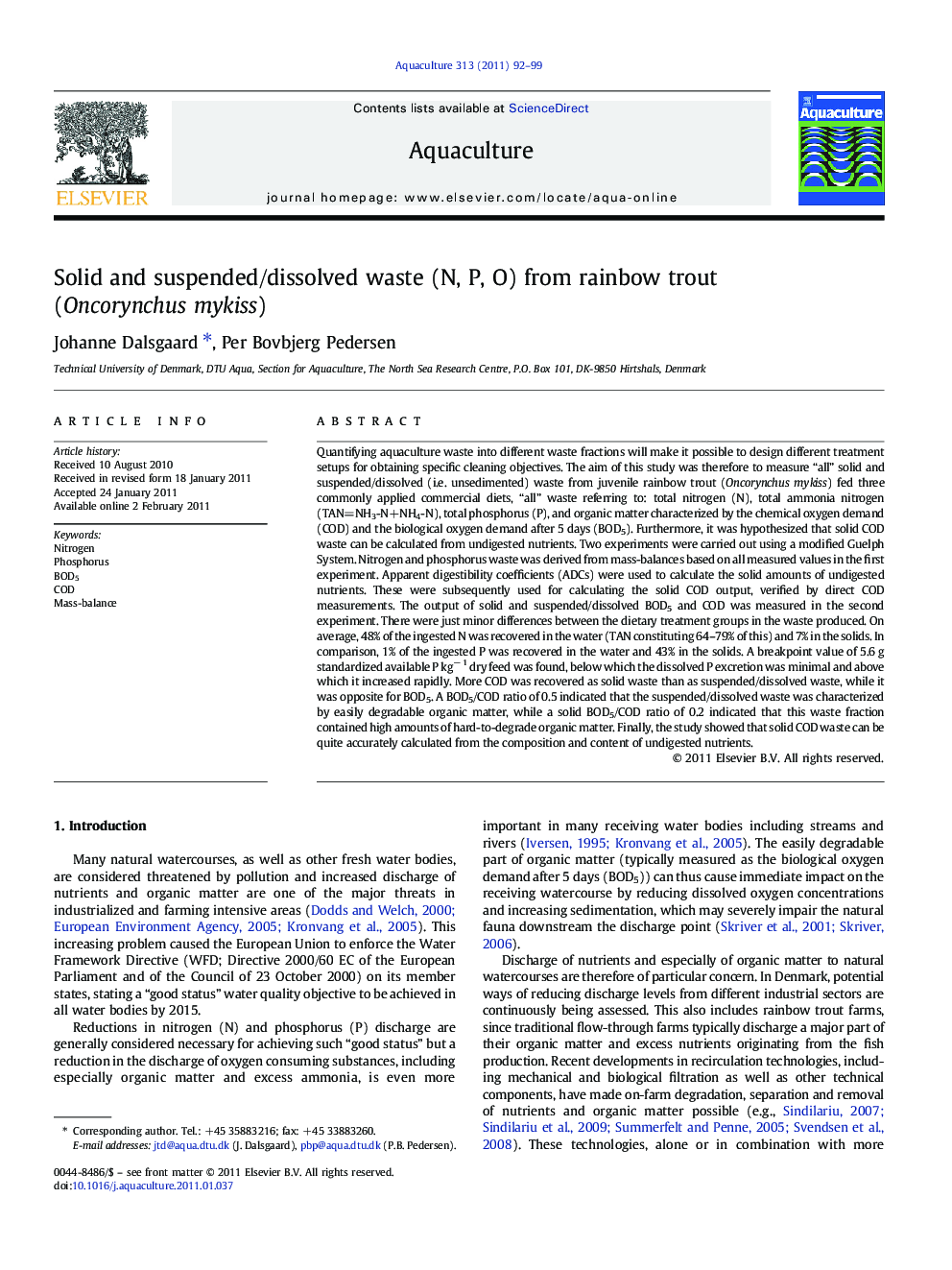| Article ID | Journal | Published Year | Pages | File Type |
|---|---|---|---|---|
| 2423325 | Aquaculture | 2011 | 8 Pages |
Quantifying aquaculture waste into different waste fractions will make it possible to design different treatment setups for obtaining specific cleaning objectives. The aim of this study was therefore to measure “all” solid and suspended/dissolved (i.e. unsedimented) waste from juvenile rainbow trout (Oncorynchus mykiss) fed three commonly applied commercial diets, “all” waste referring to: total nitrogen (N), total ammonia nitrogen (TAN=NH3-N+NH4-N), total phosphorus (P), and organic matter characterized by the chemical oxygen demand (COD) and the biological oxygen demand after 5 days (BOD5). Furthermore, it was hypothesized that solid COD waste can be calculated from undigested nutrients. Two experiments were carried out using a modified Guelph System. Nitrogen and phosphorus waste was derived from mass-balances based on all measured values in the first experiment. Apparent digestibility coefficients (ADCs) were used to calculate the solid amounts of undigested nutrients. These were subsequently used for calculating the solid COD output, verified by direct COD measurements. The output of solid and suspended/dissolved BOD5 and COD was measured in the second experiment. There were just minor differences between the dietary treatment groups in the waste produced. On average, 48% of the ingested N was recovered in the water (TAN constituting 64–79% of this) and 7% in the solids. In comparison, 1% of the ingested P was recovered in the water and 43% in the solids. A breakpoint value of 5.6 g standardized available P kg− 1 dry feed was found, below which the dissolved P excretion was minimal and above which it increased rapidly. More COD was recovered as solid waste than as suspended/dissolved waste, while it was opposite for BOD5. A BOD5/COD ratio of 0.5 indicated that the suspended/dissolved waste was characterized by easily degradable organic matter, while a solid BOD5/COD ratio of 0.2 indicated that this waste fraction contained high amounts of hard-to-degrade organic matter. Finally, the study showed that solid COD waste can be quite accurately calculated from the composition and content of undigested nutrients.
